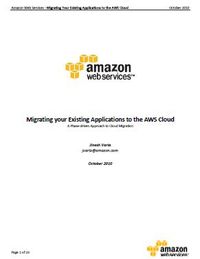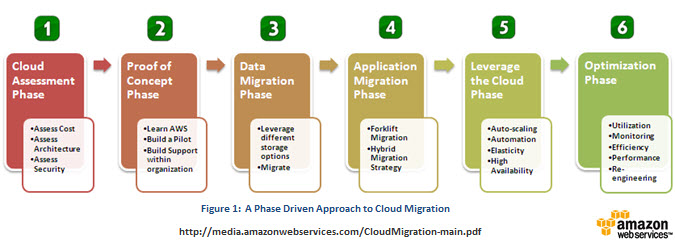AWS News Blog
New Whitepapers on Cloud Migration: Migrating Your Existing Applications to the AWS Cloud

At the same time, many businesses are looking for better ways to migrate their existing applications to a cloud-based infrastructure so that they, too, can enjoy the same advantages seen with greenfield application development.
One of the key differentiators of AWS infrastructure services is its flexibility. It gives businesses the freedom of choice to choose the programming models, languages, operating systems and databases they are already using or familiar with. As a result, many organizations are moving existing applications to the cloud today.
In that regards, I am very excited to release our series of whitepapers on cloud migration.
Download Main Paper : Migrating your existing applications to the AWS cloud (PDF)
This whitepaper will help you build a migration strategy for your company. It discusses steps, techniques and methodologies for moving your existing enterprise applications to the AWS cloud. There are several strategies for migrating applications to new environments. In this paper, we share several such strategies that has helped enterprise companies to take advantage of the cloud. We discuss a phase-driven step-by-step strategy for migrating applications to the cloud (see below).

To illustrate the step-by-step strategy, we provide three distinctly different scenarios listed in the table. Each scenario discusses the motivation for the migration, describes the before and after application architecture, details the migration process, and summarizes the technical benefits of migration:
|
Scenario Name |
Solution |
Use case |
Motivation For migration |
Additional Benefits |
Services Used |
|
Company A |
Web Application |
Marketing and collaboration Web site |
Scalability + Elasticity |
Auto Scaling, pro-active event based scaling |
EC2, S3, EBS, SimpleDB, AS, ELB, CW, RDS |
|
Company B |
Batch processing pipeline |
Digital Asset Management Solution |
Faster time to market |
Automation and improved development productivity |
EC2, EBS, S3, SQS |
|
Company C |
Backend processing workflow |
Claims Processing System |
Lower TCO, Redundancy |
Business continuity and Overflow-protection |
EC2, S3, EBS, AS, SQS, IE |
- Migration Scenario #1: Migrating web applications to the AWS cloud (PDF)
- Migration Scenario #2: Migrating batch processing applications to the AWS cloud (PDF)
- Migration Scenario #3: Migrating backend processing pipelines to the AWS cloud (PDF)
As always we are hungry for customer feedback. Let us know whether this paper is helpful to you. If you have moved an existing application to the AWS cloud, we would love to get your feedback too. Send us more details at evangelists at amazon dot com.
– Jinesh Varia
P.s. More AWS whitepapers are available at http://aws.amazon.com/whitepapers